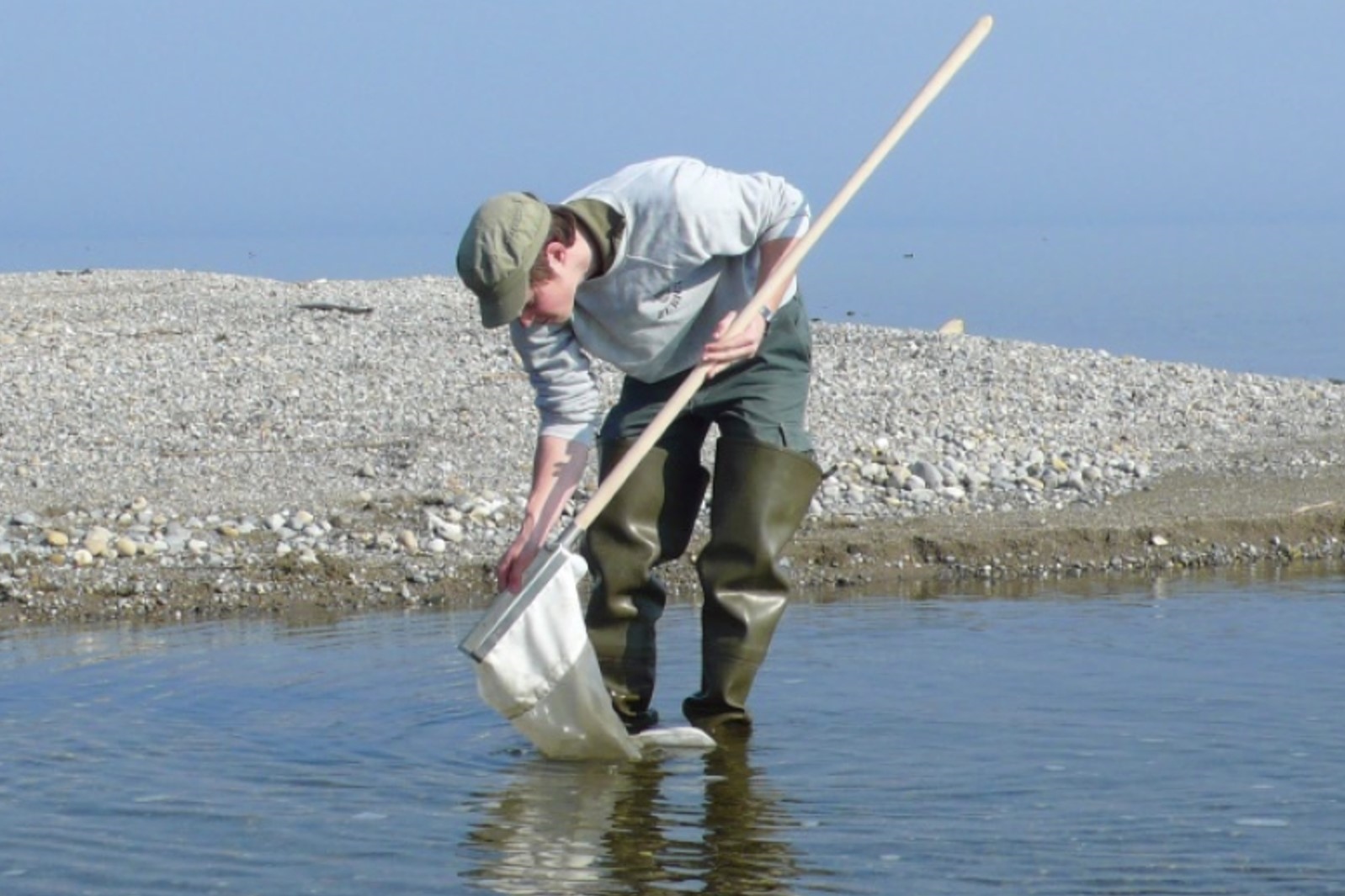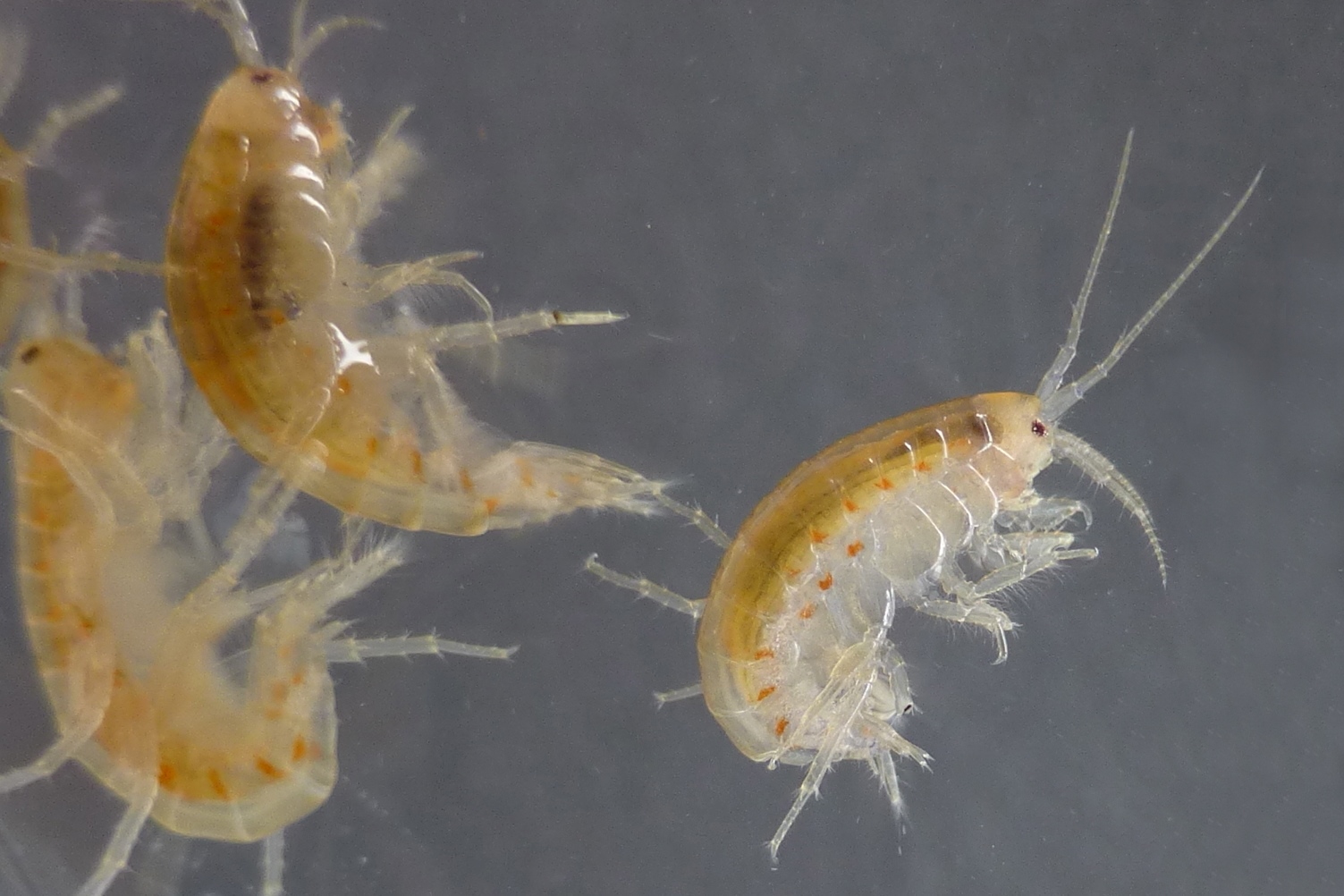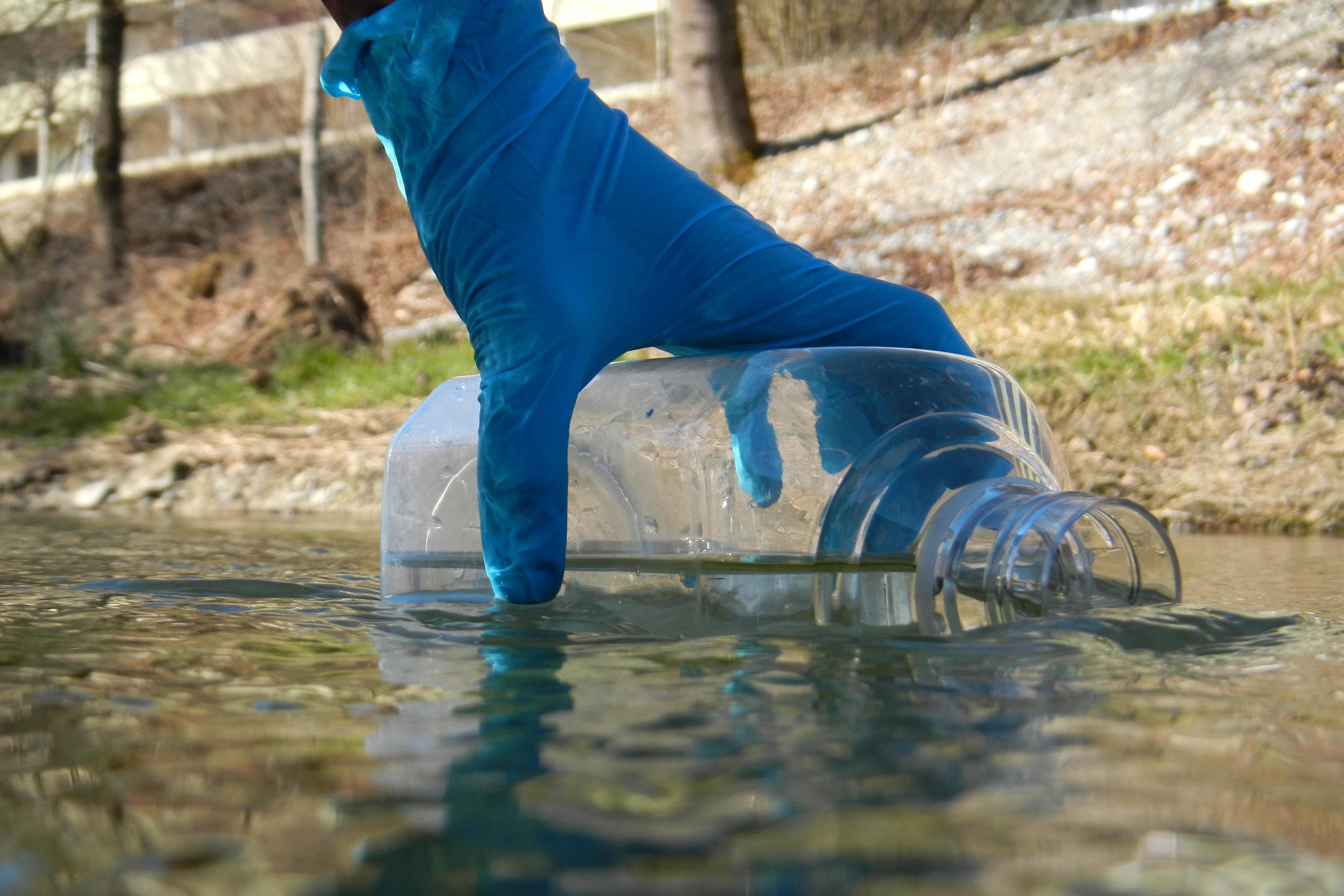Biodiversity in headwater stream catchments
Headwater streams
Headwater streams are highly diverse ecosystems that not only contain a stunning level of biodiversity, but are also an important interface between the aquatic and terrestrial realms. They are small but many, making up for more than 50% of all global river and stream length, and forming an intricate network of freshwater habitats across the landscape. For a long time, headwater streams were only studied locally, and with a minor focus on the aquatic-terrestrial linkage. We have established two long-term field sites in eastern Switzerland to specifically study the biodiversity, ecosystem dynamics and aquatic-terrestrial linkages using a combination of on-site monitoring, empirical experiments and theoretical modelling.
Firstly, we study around a dozen naturally replicated headwater streams along Lake Constance. Each of these streams drains a catchment of about 2–6 km2, with varying land-uses (forest, urban, and agriculture) dominating in these catchments. We have been monitoring the communities of keystone macroinvertebrate shredders at these streams at yearly or bi-yearly intervals for more than a decade, resulting in a unique dataset on biodiversity and ecosystem processes. We are especially interested in how these aquatic communities and food webs assemble and change over time and in response to terrestrial land uses.
Secondly, we study the upper river Thur catchment (~600 km2), covering an elevational gradient from about 500 to 2000 m a. s. l. We are using eDNA, remote sensing as well as traditional organismal sampling to understand the biodiversity, ecosystem dynamics and aquatic-terrestrial linkages across this catchment. For example, we have demonstrated a characteristic spatial fingerprint of land-water linkage of biodiversity and are able to predict biodiversity of multiple major organismal groups like macroinvertebrates, fish and bacteria across the whole river network at a very high resolution.
Amphipods and meta-ecosystem dynamics
Amphipods are key organisms in aquatic communities. They exhibit essential roles in ecosystem functioning (e.g., leaf litter degradation) or within food webs, and are additionally often used as indicator taxa for biomonitoring and ecotoxicology. We have built one of the largest databases globally on the diversity and occurrence of amphipods in temperate streams, focusing on Switzerland/Central Europe. We are combining natural history, laboratory experiments and field studies to quantify the ecological role of amphipods in headwater stream meta-ecosystems. Specifically, we are interested in a spatially and temporally explicit understanding of leaf litter decomposition and resource turn-over and the key ecosystem role played by amphipods.
The use of environmental DNA (eDNA) to assess biodiversity
Uncovering biodiversity and understanding its underlying effects on ecosystems is a central goal of ecology. Recent global changes, such as climate change or the increasing threat of invasive species, are creating additional relevance and urgency to understand the occurrence and diversity of organisms and their roles in ecosystem processes.
In our research, we advance eDNA metabarcoding technologies to assess complete and fundamental biodiversity (i.e., from bacteria to animals and plants, including trophic networks) across complex ecosystems. We integrate high-end molecular approaches with hydrological models (e.g., eDITH) and remote sensing data to predict riverine biodiversity at highly resolved spatio-temporal scales. Ultimately, this research aims to directly guide monitoring and decision making on aquatic ecosystems.
Selected Publications
Blackman RC, Carraro L, Keck F & Altermatt F. 2024. Measuring the state of aquatic environments using eDNA — upscaling spatial resolution of biotic indices. Philosophical Transactions B. in press.
Carraro L, Blackman RC & Altermatt F. 2023. Modelling environmental DNA transport in rivers reveals highly resolved spatio-temporal biodiversity patterns. Scientific Reports 13: 8854. DOI 10.1038/s41598-023-35614-6
Cereghetti E & Altermatt F. 2023. Spatio-temporal dynamics in freshwater amphipod assemblages are associated with surrounding terrestrial land use type. Ecosphere 14: e4469.DOI 10.1002/ecs2.4469
Blackman RC, Ho HC, Walser JC & Altermatt F. 2022. Spatio-temporal patterns of multi-trophic biodiversity and food-web characteristics uncovered across a river catchment using environmental DNA. Communications Biology 5: 259. DOI 10.1038/s42003-022-03216-z
Zhang H, Mächler E, Morsdorf F, Niklaus PA, Schaepman ME & Altermatt F. 2023. A spatial fingerprint of land-water linkage of biodiversity uncovered by remote sensing and environmental DNA. Science of the Total Environment 867: 161365. DOI 10.1016/j.scitotenv.2022.161365
Ho H-C, Brodersen J, Gossner MM, Graham CH, Kaeser S, Chacko MR, Seehausen O, Zimmermann NE, Pellissier L & Altermatt F. 2022. Blue and green food webs respond differently to elevation and land use. Nature Communications 13: 6415. DOI 10.1038/s41467-022-34132-9
Carraro L, Mächler E, *Wüthrich R & Altermatt F. 2020. Environmental DNA allows upscaling spatial patterns of biodiversity in freshwater ecosystems. Nature Communications 11: 3585. DOI 10.1038/s41467-020-17337-8
Mächler E, Little CJ, *Wüthrich R, Alther R, Fronhofer EA, Gounand I, Harvey E, Hürlemann S, Walser JC & Altermatt F. 2019. Assessing different components of diversity across a river network using eDNA. Environmental DNA 1: 290–301. DOI 10.1002/edn3.33
Little CJ & Altermatt F. 2018. Landscape configuration alters spatial arrangement of terrestrial-aquatic subsidies in headwater streams. Landscape Ecology 33: 1519–1531. DOI 10.1007/s10980-018-0678-0
Little CJ & Altermatt F. 2018. Do priority effects outweigh environmental filtering in a guild of dominant freshwater macroinvertebrates? Proceedings of the Royal Society B 285: 20180205. DOI 10.1098/rspb.2018.0205
Altermatt F, Alther R & E. *Mächler. 2016. Spatial patterns of genetic diversity, community composition and occurrence of native and non-native amphipods in naturally replicated tributary streams. BMC Ecology 16: 23. DOI 10.1186/s12898-016-0079-7





